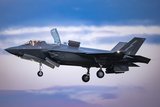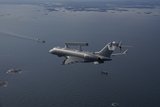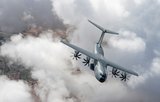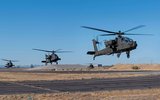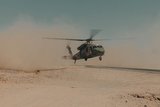South Korea considers cancellation of second AH-64E Apache helicopter purchase
South Korean already operate 36 AH-64E Apache helicopters. (Photo: US Air Force / Sgt. Cody Nelson)
South Korea is considering scrapping its 36 AH-64E Apache helicopter buy, after a major cut in defence budget and shift in the country’s defence priorities towards uncrewed aerial systems (UAS).
The National Assembly approved the cuts which saw budget for the programme reduced from KRW10 billion (US$7.3 million) to KRW300 million.
The plans originally sought to acquire 36 helicopters by 2028 at a cost of KRW 3.3 trillion (US$2.49 billion) – the second phase in the country’s attack helicopter acquisition programme. The country already operates 36 AH-64E Apache helicopters, which finished delivery in 2017.
The AH-64 rotorcraft were chosen to
Already have an account? Log in
Want to keep reading this article?
More from Air Warfare
-
![Lockheed plans further solid rocket motor investment in Europe and Middle East]()
Lockheed plans further solid rocket motor investment in Europe and Middle East
The company has worked to heavily invest in its solid rocket motor production capabilities, both in the US and internationally, to build a strong supply chain to meet growing demand.
-
![Boeing to build Apache AH-64E attack helicopters for Poland, Egypt and Kuwait]()
Boeing to build Apache AH-64E attack helicopters for Poland, Egypt and Kuwait
The $4.7 billion international order for the three countries will see production conclude around May 2032.
-
![How the US Air Force plans to use data analytics to enhance the roles of airmen and assets]()
How the US Air Force plans to use data analytics to enhance the roles of airmen and assets
The USAF has allocated nearly US$500 million to further the deployment of this type of technology in FY2026. It envisions using analytics to enhance sensors, weapons, missiles and human performance.
-
![GKN Aerospace to fly new UAV demonstrator by 2027]()
GKN Aerospace to fly new UAV demonstrator by 2027
The company plans to develop a cost-effective jet-engine drone, going from concept to a flight-tested demonstrator in 18 months.
-
![Sikorsky emphasises localised Black Hawk conversion for uncrewed U-Hawk]()
Sikorsky emphasises localised Black Hawk conversion for uncrewed U-Hawk
The platform was first unveiled in September 2025, with efforts now focusing on flight tests in the next year.








